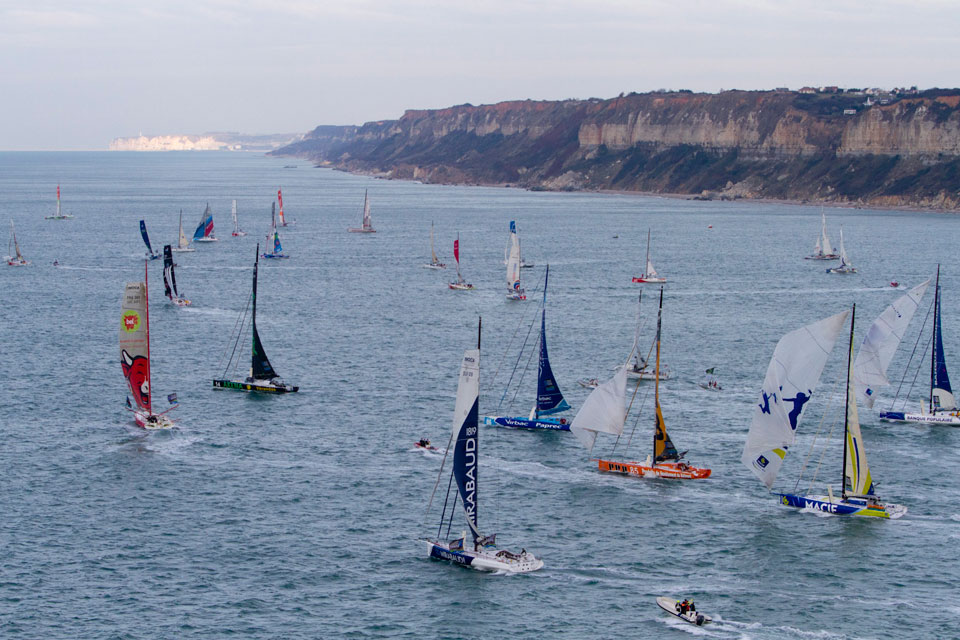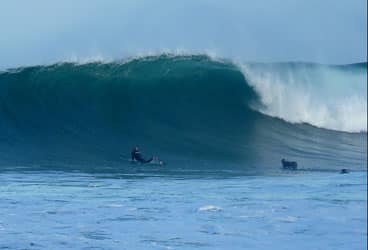
TransatJV960
The weather report was ugly. With less than 48 hours before the start of the Transat Jacques Vabre, sailors were looking at heading into the Atlantic from Le Havre, France, in steady, 40-knot side winds with 60-knot gusts and confused seas of well over 30 feet. There was a chance the fleet of Multi 50s, IMOCA Open 60s, and Class 40s could’ve slogged through the nastiness and made its way across the ocean to Costa Rica, but that was far from certain.
But surviving and completing the course is not what the Transat Jacques Vabre is all about. At least that’s what race director Jean Maurel was thinking when he decided to postpone the start until yesterday. “Racing is not just about bad weather, which will happen,” he said. “It’s about racing. The exploit should not be about survival, but about winning.”
Maurel should know. During the 1999 Jacques Vabre, his boat capsized near the Azores. While Maurel was ultimately hoisted out of the water by a container ship, his crewmate, Paul Vatine, perished.
There’s also the not-so-distant memory of the 2002 Route du Rhum, when the majority of the fleet either abandoned the race or had to be rescued. That year, 30- to 40-knot winds were the norm for most of the passage, and in some parts of the Atlantic, the wind gusted to 70 knots.
For better or worse, the element of risk in offshore racing is a main draw for many fans, especially in France, where everyone knows races like the Route du Rhum, Vendee Globe, and Barcelona World Race. But according to Maurel, voyeurism isn’t the only reason millions of people follow offshore racing. “Sure, there’s a voyeuristic side to the public’s interest in these races, but it’s the exploit and the achievement that is the most interesting,” he says. “The competitors can certainly run into bad weather, but we’re not going to go looking for it, either, and will avoid it when we can. There’s already enough sensationalism for the public at large in this race without having to look for problems [by beginning the race in treacherous conditions].”
Maurel compared offshore racing to downhill skiing. “Everybody knows it can be dangerous, but when the slope is covered in fog, the race is cancelled for safety reasons,” he said.

Photo: Tangi Le Ber
_The swell may have halted the race, but it was good news for surfers in northern France.
_
During the hours leading up to the start, competitors were less concerned about the danger ahead and more concerned with when they’d actually start.”There’s nothing worse than not knowing,” said Arnaud Boissières, who has completed two Transat Jacques Vabre races and racing the IMOCA-class Akena Vérandas with Gerald Veniard.
“They can make boats more and more secure and weather-tracking can get better,” said Boissières. “But at the end of the day, the sea remains the master. It’s kind of a beautiful thought, really.”
The 2011 Transat Jacques Vabre left Le Havre on Wednesday. Follow the fleet in our Finish Line forum.
_Update from TJV press: Around 0330hrs (UTC/GMT) Friday morning skipper Arnaud Boissières confirmed that the mast of their IMOCA Open 60 Akena Vérandas had broken some 270 miles WNW of the Breton peninsula. The duo had been lying in ninth place…
_









